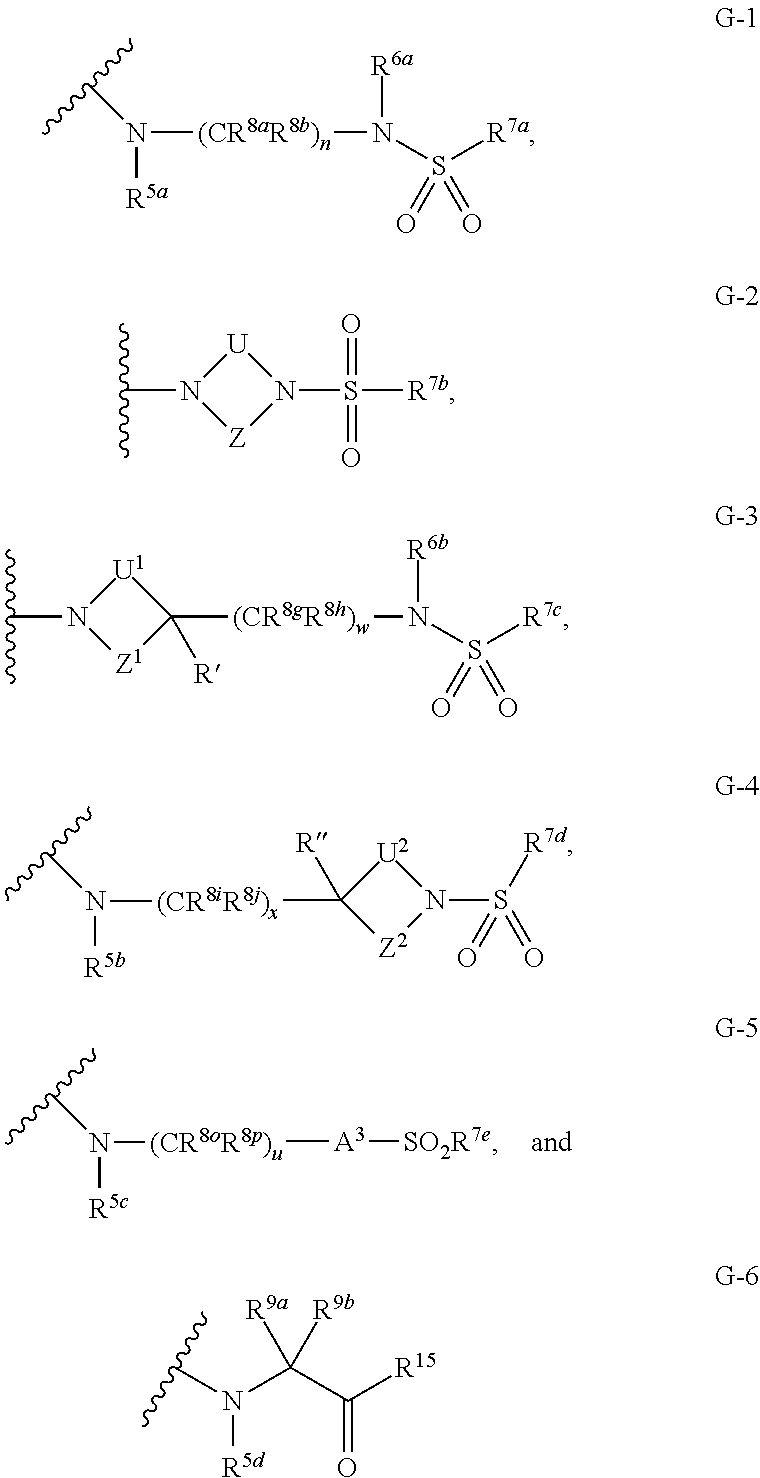Pyridine compounds as sodium channel blockers
a technology of sodium channel blocker and pyridine compound, which is applied in the field of substituted pyridine compounds, can solve the problems of many undesirable side effects of the currently available treatments
- Summary
- Abstract
- Description
- Claims
- Application Information
AI Technical Summary
Benefits of technology
Problems solved by technology
Method used
Image
Examples
example 1
Synthesis of 1-fluoro-4-(4-nitrophenoxy)benzene (compound 1)
[0486]
[0487]Method A:
[0488]A 500 mL round bottom flask was charged with 4-fluorophenol (11.2 g, 0.1 mmol), 4-fluoro-4-nitrobenzene (14.1 g, 0.1 mol), K2CO3 (27.6 g, 0.2 mol) and DMF (50 mL). The reaction mixture was stirred vigorously at 120° C. for 4 h, cooled to room temperature, and then poured into 300 mL water. The resulting mixture was extracted with ethyl acetate. The combined organic layers were dried over MgSO4 and concentrated to give compound 1 as an off-white solid which was used in the next step without further purification (23.3 g, 100% yield, (m / z+H)=234).
[0489]Method B:
[0490]A mixture of 4-fluorophenol (30 g, 0.27 mol), 1-fluoro-4-nitrobenzene (38 g, 0.27 mol) and K2CO3(37.8 g, 0.27 mol) in DMF (300 mL) was heated at 95° C. overnight. The reaction mixture was cooled to room temperature and diluted with ethyl acetate (150 mL). The organic layer was washed with water. The organic layer was dried over anhydrous...
example 2
Synthesis of 4-(4-fluorophenoxy)aniline (compound 2)
[0491]
[0492]Method A:
[0493]Compound 1 (23.3 g, 0.1 mol) was dissolved in ca. 50 mL MeOH and to this solution two spatulas of palladium on carbon (5%) (ca. 50 mg) were added. The reaction mixture was purged with nitrogen and hydrogen (three times) and stirred overnight at room temperature under a balloon of hydrogen. The palladium on carbon was removed by filtration and the filtrate was concentrated by rotary evaporation to give compound 2 as an off-white solid (20.4 g, 100% yield, (m / z+H)=204).
[0494]Method B:
[0495]Compound 1 (10 g, 42.9 mmol) was dissolved in 10% ethyl acetate in methanol (250 mL) and 10% palladium on carbon (2.0 g) was added. The reaction mixture was stirred for 5.0 h at room temperature. After the reaction was complete, the mixture was filtered through a pad of celite. The filtrate was concentrated to give compound 2 as a reddish brown solid which was used in the next step without purification (8.5 g, 97% yield, ...
example 3
Synthesis of 1-fluoro-4-(4-iodophenoxy)benzene (compound 3)
[0496]
[0497]Method A:
[0498]To a DME (272 mL) solution of compound 2 (20.4 g, 0.1 mol) was added a solution of H2SO4 (41 mL concentrated H2SO4 in 204 mL of H2O) dropwise. The resulting mixture was cooled to 0° C. and a solution of NaNO2 (10.3 g, 0.15 mol) in H2O (68 mL) was added over 20 minutes. After the addition was complete, the reaction mixture was stirred at 0° C.-5° C. for an additional 30 min and a solution of NaI (75 g, 0.5 mol) in H2O (204 mL) was added dropwise at 0° C. After the addition was complete, the mixture was stirred for and additional 30 minutes and diluted with EtOAc. The organic layer was collected and washed with an aqueous solution of Na2S2O3 and brine and dried over MgSO4. The solvent was removed by evaporation and the residue solidified instantly. The pale solid product (compound 3) was used in the next step without further purification (96% yield, (m / z+H)=315).
[0499]Method B:
[0500]To a solution of ...
PUM
| Property | Measurement | Unit |
|---|---|---|
| temperatures | aaaaa | aaaaa |
| pH | aaaaa | aaaaa |
| pH | aaaaa | aaaaa |
Abstract
Description
Claims
Application Information
 Login to View More
Login to View More - R&D
- Intellectual Property
- Life Sciences
- Materials
- Tech Scout
- Unparalleled Data Quality
- Higher Quality Content
- 60% Fewer Hallucinations
Browse by: Latest US Patents, China's latest patents, Technical Efficacy Thesaurus, Application Domain, Technology Topic, Popular Technical Reports.
© 2025 PatSnap. All rights reserved.Legal|Privacy policy|Modern Slavery Act Transparency Statement|Sitemap|About US| Contact US: help@patsnap.com



